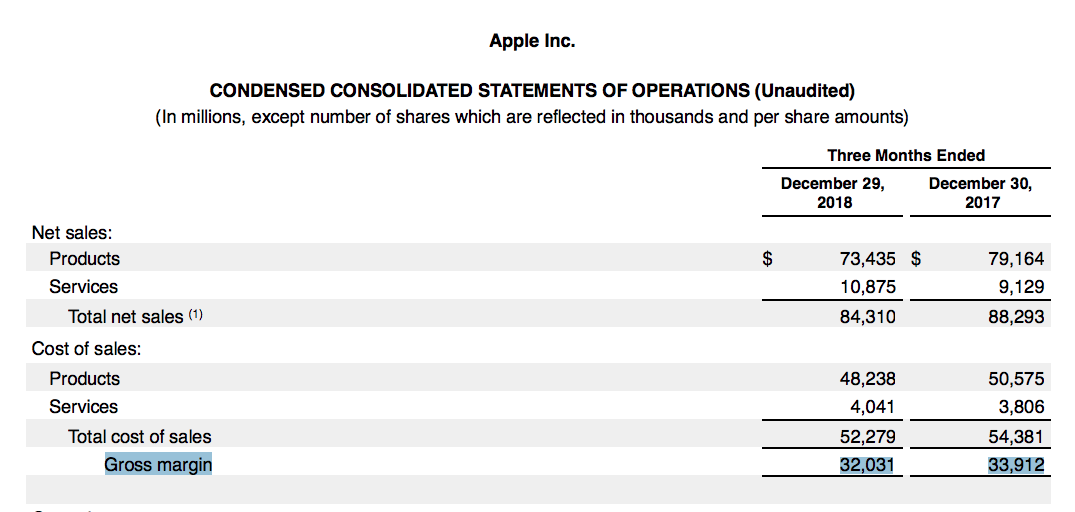
Investment professionals and individual investors often need to estimate the profitability of a given investment opportunity, or to retrospectively assess the results of past endeavors. Typically this is done with the idea of comparing two or more opportunities and deciding which one to choose. In the tiered distribution structure, at each tier, return is calculated on the outstanding capital using the APY. In the example, 100 grows by 28.47% every year to finally become 350, irrespective of how much of this total amount of 350 is received when within the timeline.
As such, IRR is much better when tracking the performance of investments with different cash inflows and outflows. With CAGR being so simple, it barely leaves place for the time value of money, except for when it takes into account the total duration of the investment period. CAGR is therefore mostly useful when comparing things like mutual fund or investment strategy performance. IRR and especially XIRR find a greater number of practical applications due to their allowance of multiple cash flows.
- This is caused by fluctuations in the rate of growth or revenue growth.
- Conversely, if they paid more than $463,846, then their IRR would be lower than 10%.
- However, this number varies depending on the circumstances surrounding each investment.
- They also need to be able to gauge the performance of any investment managers they invest alongside, including mutual funds, real estate investment trusts, and private equity firms like us.
- First, it is important to understand why compound interest formulae are used for volatile instruments where there is no actual compounding.
See the “CAGR formula” section in our CAGR calculator page for details about the variables used, but it is basically just raising the relative return to the power of one divided by the number of periods. While this accounts for compounding, obviously no interim cash flows are involved. If an investor paid $463,846 (which is the negative cash flow shown in cell C178) for a series of positive cash flows as shown in cells D178 to J178, the IRR they would receive is 10%. This means the net present value of all these cash flows (including the negative outflow) is zero and that only the 10% rate of return is earned. In other words, we can say that the main difference between IRR and CAGR is the assumption regarding the reinvestment rate of interim cash flows. On the other hand, CAGR is the average compounded growth rate for the set duration of time.
Why calculate CAGR
However, it’s equally important to review the historical performance of an investment to determine whether projections are realistic. This is caused by fluctuations in the rate of growth or revenue growth. Either way, it’s important to have a clear picture of what an investment’s value is or what it’s going to be at a later date. CAGR is a further simplification in which just a single inflow (investment event) and a single outflow (cash out event) are allowed.
The above analysis clearly tells us that in a case where the cash flow pattern is highly unpredictable, it’s better to rely on CAGR to get a real sense of what the likely return rate is. Of course, to calculate the CAGR, we need to know the total returns and the time taken to earn them. Meanwhile CAGR doesn’t care about the timing of the interim returns. Let’s say a company’s hurdle rate is 12%, and one-year project A has an IRR of 25%, whereas five-year project B has an IRR of 15%. If the decision is solely based on IRR, this will lead to unwisely choosing project A over B. Let’s look at an example of a financial model in Excel to see what the internal rate of return number really means.
Because the cash flows we have received in years 1,2 and 3 would be reinvested to earn some return. Accordingly, we need to figure out what that rate is (called the reinvestment rate) in order to calculate the value of these interim cash flows at the end of year 4. CAGR, short for “Compound Annual Growth Rate”, is the average rate of growth of an asset over a given period of time. It is applicable to all kinds of assets where the returns in one year get compounded into the base of calculating the return in the years following. The most simple example of this is the familiar compound interest calculation.
On paper, the calculation for IRR is complex, but anyone can calculate IRR using a financial calculator or a spreadsheet tool like Microsoft Excel. Regardless of which tool is used, investors need to estimate the cash flows that the property will generate over the holding period. As mentioned, this typically requires a commercial real estate proforma to forecast the cash flows to be received by the investor. The compound annual growth rate (CAGR) measures the return on an investment over a certain period of time.
How Do You Calculate IRR?
In most cases, your fellow investors will understand the value of your deal only in terms of IRR. At First National Realty Partners, we specialize in the acquisition and management of grocery store anchored retail centers. We go to great lengths to analyze the potential CAGR and IRR for every investment that we perform due diligence on.
CAGR vs. IRR: What’s the difference? – Investopedia
CAGR vs. IRR: What’s the difference?.
Posted: Mon, 31 May 2021 07:00:00 GMT [source]
CAGR is a great tool for comparing the performance of investments or key business metrics. However, since CAGR is calculated based on a particular timeframe, you can’t make comparisons for different periods. When it comes to calculating the performance of investments over time, CAGR is the best formula. Moreover, it helps address the limitations of the arithmetic return.
Equity or Equity Mutual Funds
Along with the CAGR formula, it’s also essential to know how to calculate the internal growth rate (IGR). This refers to the highest level of growth your company can achieve without external financing. It’s a key metric, especially for startups and small businesses, as it represents the ability to increase profit without incurring debt or issuing more stock. In such cases, CAGR cannot capture these flows and so IRR is the correct profitability metric to compute. When there are multiple cash flow events IRR becomes necessary, where XIRR is an extension of IRR which allows for non-periodic cash flows. It is important for commercial real estate investors to understand that IRR can be used to build discipline into the investment process.

Not questioning this assumption may lead to investors accepting investment results which appear better than they actually are or would be under realistic assumptions. However, growth rate is a linear measure that does not factor in compound growth. By calculating the CAGR for each vehicle, you’ll know the average return to expect during the investment period. With this information, it will be easier to compare different investments and determine the best one.
CAGR vs IRR
Calculating an IRR for each potential investment also allows investors to rank different investments against one another. In other words, if an investor is faced with three potential investments, they can create pro forma financial statements for each one. cagr vs irr Generally speaking, the one with the highest IRR is the one that should be pursued. If for some reason, it is unavailable, then the investment option with the second highest IRR should be purchased, assuming it meets the investor’s minimum IRR threshold.
They also need to be able to gauge the performance of any investment managers they invest alongside, including mutual funds, real estate investment trusts, and private equity firms like us. In every asset class, managers or sponsors are judged against a benchmark, whether a formal index or simply an individual investor’s self-determined hurdle rate. To back into the IRR, a financial calculator, Excel, or portfolio accounting system is ideal.
A company is deciding whether to purchase new equipment that costs $500,000. Management estimates the life of the new asset to be four years and expects it to generate an additional $160,000 of annual profits. In the fifth year, the company plans to sell the equipment for its salvage value of $50,000. In reality, there are many other quantitative and qualitative factors that are considered in an investment decision.) If the IRR is lower than the hurdle rate, then it would be rejected. Many goal planners (including mine) while calculating corpuses use CAGR and not IRR. As shown above this is incorrect and will end up overestimating the required corpus and hence the monthly investment.
The IRR assumes that the interim cash flows of Rs. 200, 400 and 500 are all reinvested at the rate of 27.41%. It is because of this assumption that the IRR is higher than the CAGR which had assumed the interim cash flows be reinvested at 5%. In our case, the beginning investment can be considered as the initial cash outflow. The ending investment value can be considered as the cash inflow in the terminal year.

Let’s assume an investor purchases a commercial property today for $1.5M and sells it five years later for $2M. In years one through five, the investor receives the following cash flows on an annual basis. The IRR is classified as a discount rate that utilizes net present value (NPV), making all cash flows equal to zero in a discounted cash flow (DCF) analysis.
CAGR vs. IRR: Understanding investment growth measures
In our scenario, that rate comes to 18.92%, even though the yearly returns were significantly different. For CAGR calculations to remain accurate, there are some key actions your company will need to take. Second, all the profits for the set number of years should be reinvested. So, $5,000 absolute return on an investment of $10,000 is equal to 50% relative return. Depending on the type of investment, different types of returns are of applicable, including absolute return, relative return, periodic returns, and more complex schemes including CAGR, IRR, and XIRR among them.
When the time to return is different across the investment opportunities, annualized measurements are appropriate. Both CAGR and Simple annualized return work when there are only two cash flow events, one is suitable with compounding returns and the other with non-compounding ones. The CAGR is superior to an average returns figure because it takes into account how an investment is compounded over time. CAGR is also subject to manipulation as the variable for the time period is input by the person calculating it and is not part of the calculation itself. In this scenario, we do away with the assumption of no interim cash flows and assume that we receive Rs. 200 in Year 1, Rs. 500 in Year 2, Rs. 400 in Year 3 and Rs. 900 in Year 4. As mentioned earlier, IRR is the rate at which the present value of cash inflows equals the present value of cash outflows.

In most situations, the higher the IRR, the better the investment option. IRR is often used by companies when they must choose which project is best between many options. A project that has an IRR above its cost of capital is one that will be profitable.
